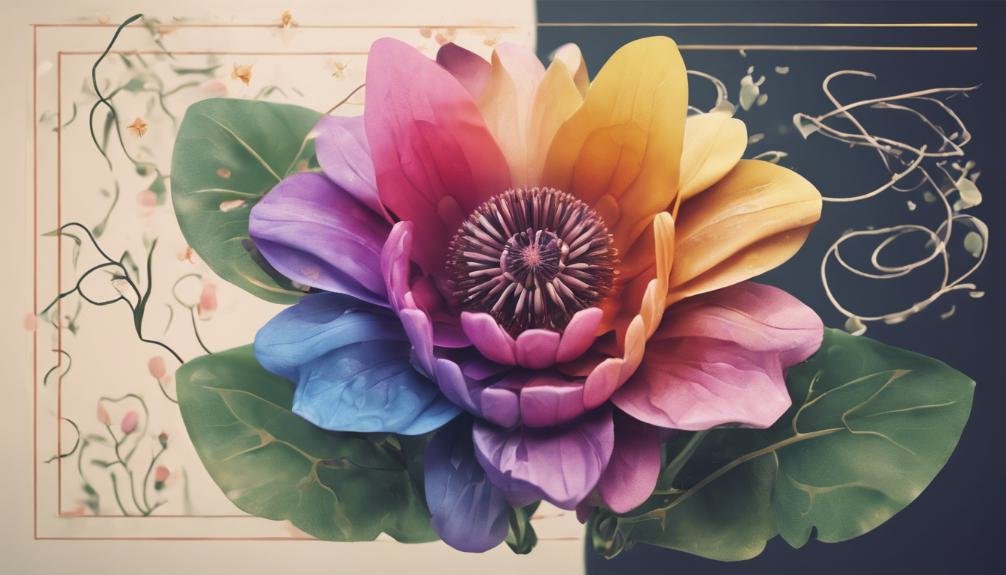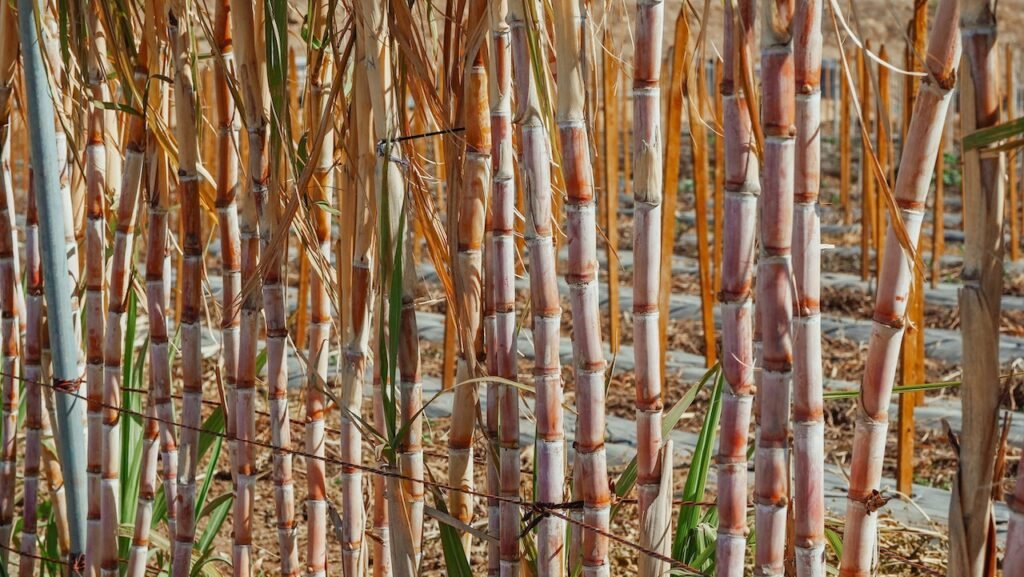You're curious about the language of flowers across cultures. With over 350 languages spoken worldwide, flowers have become a universal language, transcending cultural and linguistic barriers to convey emotions, symbolize values, and connect people across the globe. From Victorian Floristry to Asian traditions, European blooms, African, Indo-European, and Indigenous cultures, flowers hold symbolic meanings reflecting cultural, social, and religious values. In many cultures, flowers are integral to rituals, ceremonies, and spiritual practices, representing life, growth, and spiritual renewal. As you explore the world of flowers, you'll discover the intricate ways they convey meaning and emotions, and unravel the secrets of a language that knows no borders.
Key Takeaways
- Flowers have symbolic meanings that reflect cultural, social, and religious values in various languages and cultures.
- In Victorian Floristry, the language of flowers was refined, making it an integral part of social etiquette.
- In Japanese culture, cherry blossoms symbolize fragility and impermanence, while peonies represent good fortune and prosperity in Chinese culture.
- Flowers are integral to Hindu mythology, with the goddess Lakshmi often depicted with a lotus flower, symbolizing spiritual growth and purity.
- Across indigenous cultures, flowers carry deep symbolic meaning, reflecting a profound connection between humans, nature, and the spiritual domain.
Romantic Languages of Flowers

Delving into the fascinating domain of floriography, you'll discover that romantic languages of flowers have been employed in various cultures to convey emotions, intentions, and messages.
This subtle yet powerful form of communication has been refined over time, particularly in the sphere of Victorian Floristry. During this era, flowers became an integral part of social etiquette, with specific blooms and arrangements holding distinct meanings.
You'll learn that a well-crafted bouquet could express gratitude, apology, or even declare undying love.
In the context of Floral Etiquette, understanding the language of flowers was essential for avoiding social faux pas.
For instance, presenting a suitor with a bouquet of red roses signified passionate love, while a gift of yellow roses conveyed friendship.
Additionally, the way flowers were arranged, presented, and even worn, held significant importance.
As you explore the intricacies of romantic languages of flowers, you'll uncover a world where emotions were conveyed with precision and delicacy, adding a touch of elegance to social interactions.
Flowers in Asian Cultures
In Japan, China, and Korea, you'll find that flowers have played a significant role in cultural and spiritual practices for centuries, with specific blooms and arrangements holding symbolic meanings that vary across these distinct Asian cultures. In Japan, the art of ikebana emphasizes harmony, balance, and nature, with carefully selected flowers and branches arranged to create a sense of tranquility. In Korea, hanakotoba, or the language of flowers, is used to convey emotions and messages through bouquets and arrangements.
Here's a breakdown of some significant flowers in Asian cultures:
| Flower | Culture | Meaning |
|---|---|---|
| Cherry Blossom | Japanese | Fragility, Impermanence |
| Peony | Chinese | Good Fortune, Prosperity |
| Lotus | Korean | Purity, Spiritual Growth |
| Chrysanthemum | Japanese | Longevity, Honor |
| Orchid | Chinese | Refinement, Elegance |
In these cultures, flowers are not just aesthetically pleasing, but hold deep symbolic meanings that are woven into daily life and tradition. By understanding the significance of these flowers, you can appreciate the rich cultural heritage of Asia and the role that flowers play in it.
European Blooms and Blossoms

As you explore the world of European Blooms and Blossoms, you'll notice the significance of flowers in French and German cultures.
You'll find that France's rich floral heritage is reflected in its exquisite gardens and perfumes, while Germany's blooming traditions are deeply rooted in its folklore and festivals.
French Floral Heritage
What role do the iconic fleur-de-lis and ornate gardens of the Palace of Versailles play in showcasing France's rich floral heritage, which has been cultivated and refined over centuries?
As you plunge into the world of French floristry, you'll discover the intricate art of creating exquisite French bouquets, which have been a staple of French culture since the 17th century. During the Floral Renaissance, French florists perfected the art of combining flowers, foliage, and other botanicals to create breathtaking arrangements that exuded elegance and sophistication.
You'll notice that French bouquets often feature a mix of fresh flowers, such as roses, peonies, and hydrangeas, carefully arranged to create a visually stunning display.
The use of greenery, like eucalyptus and ferns, adds depth and texture to the arrangements, while delicate flowers like lavender and baby's breath provide a soft, romantic touch.
As you explore the world of French floristry, you'll appreciate the attention to detail and the emphasis on harmony and balance that define this revered art form.
German Blooming Traditions
Explore the charming world of German blooming traditions, where festive flower markets and vibrant botanical gardens thrive, reflecting the country's deep-rooted love for nature and seasonal celebrations.
As you venture into this world, you'll discover that Germans have a special affinity for flowers, which play a significant role in their cultural heritage. During May Day celebrations, for instance, you'll find locals adorning their homes and streets with vibrant flowers, particularly lilacs and tulips, to usher in the arrival of spring.
In winter, German florists and garden centers shift to showcasing festive Christmas poinsettias, which add a pop of color to the snowy landscapes.
The country's botanical gardens, like the Berlin Botanical Garden, are also a treat, boasting an impressive collection of over 20,000 plant species. As you wander through these gardens, you'll notice the meticulous attention to detail and the passion for horticulture that defines German blooming traditions.
Whether it's the vibrant flower markets or the serene botanical gardens, Germany's love for flowers is palpable, and you'll certainly be enchanted by the beauty and charm of this floral culture.
The Language of African Florals
In Africa, where flora is as diverse as the continent's 2,000 languages, you'll discover a rich tapestry of flowers that convey meaning and significance in various cultural contexts.
The Sahara blooms, for instance, are revered for their resilience in the harsh desert environment. In some African cultures, these flowers symbolize strength and adaptability.
The Nubian petals, on the other hand, are prized for their delicate beauty and are often used in traditional ceremonies.
In West Africa, the hibiscus flower is used to make a popular tea, known as 'bissap,' which is rich in vitamins and minerals. In some cultures, hibiscus is also used as a natural remedy for various ailments.
In East Africa, the jasmine flower is highly valued for its fragrance and is often used in perfumes and fragrances.
In many African cultures, flowers are also used to convey emotions and sentiments, such as love, gratitude, and respect.
Blossoming Beauty in Indo-European

Across the vast expanse of Indo-European languages, which encompass over 46% of the world's population, flowers have been imbued with symbolic meanings that reflect the cultural, social, and religious values of their respective societies.
As you plunge into the world of Sanskrit symbolisms, you'll discover that flowers like the lotus and jasmine are revered for their spiritual significance, representing spiritual growth and enlightenment.
In Persian poetry, flowers are often used as metaphors for love, beauty, and mortality. The rose, in particular, is a symbol of passion and devotion, while the daffodil represents new life and renewal.
You'll find that flowers are also integral to Hindu mythology, with the goddess Lakshmi often depicted with a lotus flower, symbolizing purity and beauty.
As you explore the Indo-European languages, you'll notice that flowers are often used to convey complex emotions and ideas, adding depth and nuance to literature and art.
Flowers in Indigenous Cultures
Beyond the Indo-European sphere, you'll find that flowers play a vital role in the spiritual and cultural practices of indigenous cultures worldwide, where they're often imbued with mystical powers and mythological significance.
In many Native American cultures, flowers are integral to rituals and ceremonies, symbolizing life, growth, and spiritual renewal. For instance, the Cherokee people use flowers in traditional medicine, while the Navajo incorporate them into ceremonial dances to guarantee fertility and prosperity.
In Aboriginal Australian cultures, flowers feature prominently in Tribal significance, often representing ancestral spirits and the Dreamtime.
The Warlpiri people of central Australia, for example, believe that flowers hold the power to communicate with the dead and to heal the sick.
Similarly, in Maori culture, flowers are used in traditional tattoos to convey status, rank, and spiritual connection.
Across indigenous cultures, flowers aren't just aesthetic decorations but carry deep Native symbolism, reflecting a profound connection between humans, nature, and the spiritual domain.
Frequently Asked Questions
What Is the Universal Language of Flowers Across Cultures?
You discover that across cultures, flowers convey meaning through cultural significance and floral etymology, where a rose symbolizes love, a chrysanthemum represents longevity, and a lily embodies purity, transcending linguistic barriers to convey emotions and ideas.
Are There Flowers With Negative Symbolic Meanings?
You'll find that about 10% of flowers have negative symbolic meanings, like Dark Blooms, which symbolize mourning, and those with Poisonous Petals, warning of danger; surprisingly, these flowers still hold cultural significance, revealing the complexity of human emotions.
Can Flowers Be Used as a Form of Secret Communication?
You can employ flowers as a clandestine communication method, using floral cryptography to convey hidden messages. Botanical espionage has been used throughout history, where specific blooms or arrangements convey secret information to those in the know.
Do Flowers Have Different Meanings in Different Seasons?
As you ponder the language of blooms, you coincidentally stumble upon a vintage flower calendar, revealing that, yes, flowers do have different meanings in different seasons, influencing the significance of seasonal bouquets and arrangements.
Are There Flowers That Symbolize Good Luck Across All Cultures?
You'll find that certain blooms transcend cultural boundaries, symbolizing good luck across the globe. Good luck blooms, like the Four-Leaf Clover, are sought after by floral fortune tellers, who believe these rare flowers attract prosperity and positivity.


